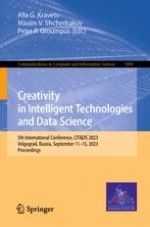This book constitutes the proceedings of the 5th Conference on Creativity in Intellectual Technologies and Data Science, CIT&DS 2023, held in Volgograd, Russia, in September 2023.
The 40 regular papers and 2 keynote papers presented were carefully reviewed and selected from 148 submissions. The papers are organized in the following topical sections: Artificial intelligence and deep learning technologies for creative tasks. Knowledge discovery in patent and open sources; Artificial intelligence & Deep Learning Technologies for Creative tasks. Open science semantic technologies; Artificial intelligence and deep learning technologies for creative tasks. Computer vision and knowledge-based control; Cyber-physical systems and big data-driven control: pro-active modeling in intelligent decision making support; Cyber-Physical Systems & Big Data-driven world. Industrial creativity in CASE/CAI/CAD/PDM; Cyber-Physical Systems & Big Data-driven world. Intelligent Internet of Services and Internet of Things; Intelligent Technologies in Social Engineering. Data Science in Social Networks Analysis and Cyber Security; Intelligent Technologies in Social Engineering. Creativity & Game-Based Learning; Intelligent Technologies in Social Engineering. Intelligent Technologies in Medicine& Healthcare; Intelligent Technologies in Social Engineering. Intelligent technologies in Urban Design&Computing.
